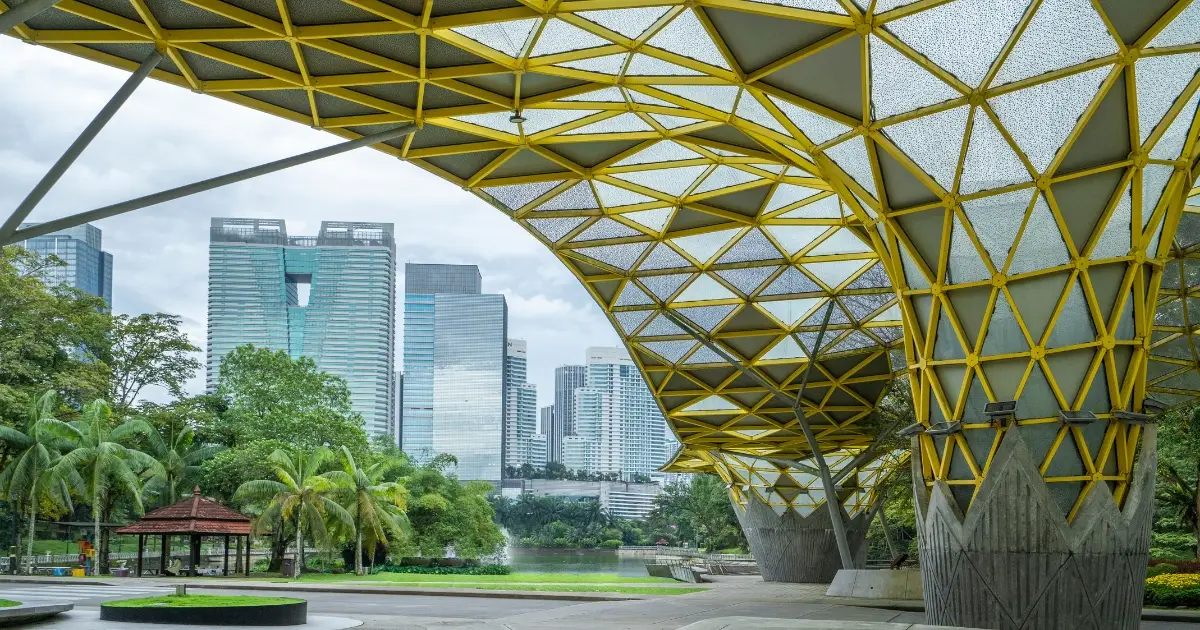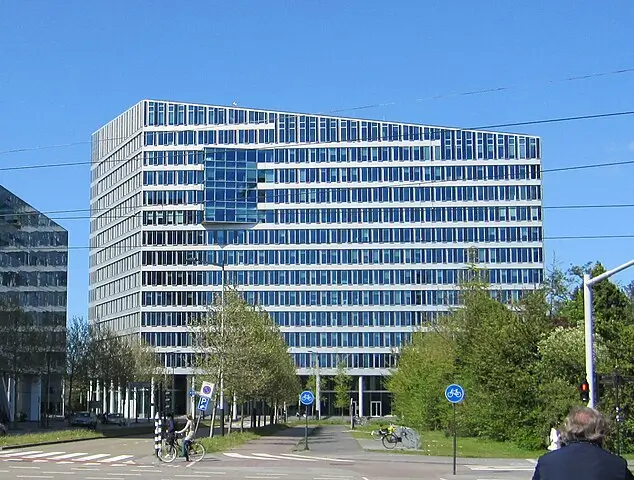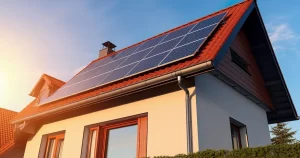Why is Sustainability Important: 5 key Reasons for Sustainable Architecture
By Mz Chaker & EAGC │ March 11, 2025
Learn why Sustainable Architecture is the way to shape Building Design & City Planning.

Sustainability is no longer just a trendy concept; it’s a necessity. As urban populations grow and climate change accelerates, the way we design and build our spaces has never been more important. Sustainable Architecture is at the forefront of this transformation, creating structures that minimize environmental impact while maximizing efficiency and comfort. But why does it matter? What makes it essential for the future of our planet and society?
This article explores the critical role of Green Building Design in addressing environmental concerns, reducing costs, and improving human well-being. We’ll uncover why sustainable architecture is the best way to shape building design and city planning. From Energy Efficiency to Green Construction, this guide provides valuable insights into why adopting sustainability in architecture is no longer an option—it’s a responsibility.
1. Why is Sustainability Important : key issues
The built environment is central to the global Sustainability challenge, as Architecture and Construction significantly impact natural resources, energy consumption, and carbon emissions. This importance arises from several factors:
- Environmental Impact of Traditional Construction: Conventional building methods heavily rely on non-renewable resources such as concrete, steel, and timber, leading to deforestation, habitat destruction, and resource depletion. Additionally, construction and demolition waste contribute significantly to landfill overflow, further exacerbating environmental degradation.
Carbon Emissions and Climate Change: According to the International Energy Agency (IEA), the construction and operation of buildings account for nearly 40% of global carbon emissions. Inefficient energy use, reliance on fossil fuels, and poor insulation contribute to excessive energy consumption, accelerating Climate Change and environmental damage.
Economic Pressures and Rising Energy Costs: The growing demand for energy, coupled with fluctuating fuel prices, places financial strain on homeowners, businesses, and governments.
- Need for Energy-Efficient and Resilient Infrastructure: As climate change intensifies, buildings must be designed to withstand extreme weather conditions, including floods, hurricanes, and heatwaves.
These implications shape our future and highlight the urgency of sustainable solutions




2. The Role of Sustainability in Architecture
Sustainability is about “meeting the needs of the present without compromising the ability of future generations to meet their own needs”(United Nations). This principle serves as the foundation for sustainable development. It affects every aspect of life, including the economy, environment, and society. When it comes to Architecture, Sustainability becomes an essential response to the pressing environmental, economic, and social challenges facing our world today.
Sustainable Architecture integrates design strategies that reduce negative environmental impacts. It is a comprehensive approach that balances functionality, aesthetics, and efficiency. The following paragraphs explore its key principles and how they shape the future of built environments.
Defining Sustainable Architecture
Sustainable Architecture focuses on resource efficiency, reducing waste, and optimizing energy use. It incorporates eco-friendly materials, passive design strategies, and renewable energy sources to minimize a building’s carbon footprint. By combining cutting-edge technology with traditional techniques, sustainable architecture achieves high performance with minimal environmental harm.
Principles of Eco-Friendly Design
To create a truly sustainable built environment, architects must follow essential principles that minimize ecological harm while enhancing efficiency and comfort. These principles ensure that structures are not only environmentally responsible but also economically and socially beneficial. Below, we explore the key pillars that shape eco-friendly design and contribute to a more sustainable future.
- Energy Efficiency – Sustainable buildings use high-performance insulation, solar panels, and passive design techniques to reduce energy demand. Smart technology, such as automated lighting and climate control, further enhances efficiency, cutting down on unnecessary consumption.
- Water Conservation – Effective water management is key to sustainability. Features like rainwater harvesting, water-efficient fixtures, and wastewater recycling help reduce water wastage and preserve vital resources for future generations.
- Material Sustainability – The choice of building materials significantly impacts sustainability. Using recycled, non-toxic, and locally sourced materials lowers carbon footprints while ensuring durability and safety.
- Waste Reduction – The construction industry generates vast amounts of waste. By adopting modular designs, adaptive reuse, and efficient construction methods, we can minimize waste and promote a circular economy.
- Resilience & Adaptability – Climate change and urban challenges demand flexible and durable structures. Sustainable buildings incorporate design elements that enhance resilience, such as flood-resistant foundations, adaptable layouts, and energy-independent systems.
3. Five Key Reasons for Sustainable Architecture
Sustainable architecture offers numerous benefits that extend beyond environmental impact. It enhances energy efficiency, lowers costs, improves human health, and ensures resilience against climate change. Below, we explore five key reasons why integrating sustainability into architectural design is essential for the future.

Environmental Impact – Reducing Carbon Footprints and Resource Consumption
Traditional construction depletes natural resources, generates waste, and emits greenhouse gases, contributing to environmental degradation. In contrast, Green Building minimizes reliance on fossil fuels and mitigates environmental harm through innovative design and sustainable practices. These buildings utilize energy-efficient materials, harness renewable energy sources like solar and wind power, and implement waste reduction strategies such as recycling and upcycling. Furthermore, integrating green roofs, urban forests, and permeable surfaces enhances biodiversity while improving air quality in densely populated areas. By prioritizing sustainability, architecture plays a crucial role in protecting ecosystems, preserving resources, and creating healthier urban environments for future generations.
Energy Efficiency – Lowering Energy Use with Smart Design and Materials
Buildings consume nearly 40% of global energy, according to the United Nations Environment Programme (UNEP). Building Design emphasizes energy-efficient windows, high-performance insulation, and passive solar strategies to cut energy demand. Smart technology, such as automated lighting and climate control systems, further optimizes energy use. Additionally, energy storage solutions and microgrids enable greater self-sufficiency and resilience.
Cost Savings – Long-Term Financial Benefits of Sustainable Buildings
While Green Construction may require a higher initial investment, its long-term financial benefits far outweigh the costs. Sustainable buildings lead to significantly lower energy bills, reduced maintenance expenses, and higher property values. Additionally, many governments offer incentives, grants, and tax credits for energy-efficient designs, making green construction more accessible and financially attractive. Over time, these buildings generate substantial savings through decreased operational costs and enhanced durability, ensuring a strong return on investment. By prioritizing sustainability, both individuals and businesses can achieve economic stability while contributing to a greener future.
Health & Well-Being – Improving Air Quality and Occupant Comfort
Indoor air pollution can often be more harmful than outdoor air pollution, affecting respiratory health and overall well-being. Sustainable Architecture addresses this issue by incorporating natural ventilation systems, non-toxic building materials, and biophilic design elements that enhance indoor air quality. By reducing exposure to harmful chemicals and promoting airflow, these strategies create healthier environments for occupants. Furthermore, access to green spaces, daylighting strategies, and the use of noise-reducing materials contribute to mental clarity, stress reduction, and overall comfort. As a result, sustainable buildings not only support environmental health but also improve the daily lives of those who live and work in them.
Future-Proofing – Ensuring Resilience Against Climate Change and Urban Challenges
The built environment must continuously adapt to shifting climate patterns and urban challenges. Sustainable construction plays a crucial role in this adaptation by integrating flood-resistant designs, green roofs, and energy-independent systems. These features help buildings withstand extreme weather conditions while maintaining functionality. Moreover, modular and flexible design strategies enable structures to evolve over time, accommodating new uses without requiring demolition. This adaptability extends the lifespan of buildings, minimizes waste, and reduces the environmental impact of new construction. By prioritizing resilience and flexibility, sustainable architecture ensures that our cities remain livable, resource-efficient, and prepared for the challenges ahead.
4. Sustainable Practices in Modern Architecture
As the demand for environmentally responsible design continues to grow, architects and builders are embracing innovative practices to create more sustainable structures. By integrating advanced materials, cutting-edge technologies, and efficient construction methods, modern architecture is setting new benchmarks for Sustainability. The following sections explore key strategies and exemplary projects that showcase the potential of sustainable design in shaping a greener future.
Green Building Materials and Energy-Efficient Systems
Sustainable Architecture prioritizes the use of eco-friendly building materials that minimize environmental impact. Recycled steel, bamboo, reclaimed wood, and low-carbon concrete are popular choices that reduce reliance on non-renewable resources. Additionally, energy-efficient systems such as LED lighting, geothermal heating, and smart climate control enhance building performance while reducing energy consumption. Water conservation systems, including rainwater harvesting and greywater recycling, further contribute to sustainability by minimizing waste.
Examples of Successful Sustainable Architecture Projects
Many groundbreaking projects exemplify the success of Green Building Design:
- The Edge, Amsterdam – One of the most energy-efficient office buildings globally, featuring solar panels, smart sensors, and an advanced automated energy management system to minimize its carbon footprint.
- Bosco Verticale, Milan – A striking example of urban sustainability, incorporating vertical forests that enhance biodiversity, improve air quality, and naturally regulate indoor temperatures.
- CapitaGreen, Singapore – Designed with a unique double-skin facade and sky forests, this building promotes natural ventilation, reducing the need for artificial cooling and lowering energy consumption.
These projects illustrate how sustainability can be seamlessly woven into modern architecture, creating spaces that are not only functional but also environmentally responsible. By adopting such forward-thinking designs, the architectural industry is paving the way for a more sustainable and resilient built environment.
5. Challenges and Solutions in Sustainable Architecture
Sustainable architecture presents immense benefits, but its adoption is not without obstacles. Many projects face financial constraints, regulatory challenges, and resistance to new technologies. Additionally, sourcing eco-friendly materials and ensuring widespread awareness remain pressing concerns. However, innovative solutions are emerging to address these issues, making green architecture more accessible and feasible. The following sections explore the key challenges and effective strategies that are shaping the future of sustainable building design.
Common Obstacles to Implementing Green Design
One of the primary hurdles is the high initial investment required for eco-friendly technologies and materials. Additionally, sustainable materials are not always readily available, making procurement more complex and costly. Resistance to change within the construction industry further complicates efforts to transition to greener practices. Moreover, a lack of widespread awareness among stakeholders, coupled with inadequate government policies, can hinder the integration of sustainable techniques. However, addressing these barriers through innovation, education, and policy reform can pave the way for a more sustainable built environment.
Innovative Solutions for Overcoming Sustainability Challenges
To overcome these challenges, architects and developers are actively seeking innovative solutions that make Sustainable Architecture more feasible and accessible. Government incentives, tax credits, and sustainable certification programs play a vital role in reducing the financial burden of green construction, encouraging more widespread adoption. Additionally, advancements in technology, such as 3D-printed materials and modular construction, are revolutionizing the industry by lowering costs and streamlining building processes. At the same time, educational initiatives and regulatory frameworks are fostering greater awareness and promoting the benefits of eco-friendly design. By integrating these strategies, the barriers to sustainable architecture are gradually being dismantled, paving the way for a greener, more resilient built environment.
6. Future of Sustainable Architecture
As technology advances and environmental concerns become more pressing, the future of sustainable architecture is evolving rapidly. Innovations in smart buildings, renewable energy, and circular economy principles are paving the way for greener, more efficient structures. At the same time, governments and organizations worldwide are implementing policies to encourage sustainable practices. In the following paragraphs, we approach key trends shaping the future of sustainable architecture and the critical role that policymakers and industry leaders play in this transformation.
Emerging Trends and Innovations
The future of sustainable architecture is shaped by cutting-edge innovations that enhance efficiency and reduce environmental impact. Smart buildings, equipped with AI-driven energy management systems, optimize resource consumption by adjusting energy use based on real-time data. At the same time, the circular economy is gaining traction, promoting the reuse and recycling of construction materials to minimize waste and extend material lifespan. Additionally, biophilic design is emerging as a powerful trend, integrating natural elements such as living walls, green roofs, and ample daylight to enhance both environmental sustainability and human well-being. These advancements, combined with evolving policies and industry efforts, are transforming architecture into a more responsible and future-ready discipline.
The Role of Governments and Organizations
Governments and global organizations play a crucial role in promoting sustainability in architecture. Policies such as energy efficiency regulations, building codes, and carbon reduction initiatives drive the transition toward greener construction practices. Furthermore, organizations like the World Green Building Council advocate for sustainable development and provide guidelines for achieving net-zero emissions in the built environment.
7. How to Support Sustainable Architecture
Simple Steps for Individuals, Businesses, and Policymakers
Everyone has a role to play in supporting Green Construction. Individuals can choose energy-efficient appliances, adopt sustainable home renovations, and advocate for eco-friendly urban planning. Businesses can invest in green office spaces, implement sustainable supply chain practices, and prioritize corporate social responsibility. Policymakers, on the other hand, can introduce tax incentives, enforce sustainable building codes, and promote research in green technology.
Importance of Choosing Eco-Friendly Building Materials
One of the most impactful ways to support sustainability is by selecting eco-friendly building materials. Opting for low-carbon concrete, reclaimed wood, and recycled materials significantly reduces environmental impact. Additionally, supporting companies that prioritize sustainable sourcing and ethical production encourages the adoption of greener practices industry-wide.
In conclusion,
Sustainable architecture is more than a passing trend—it is a vital solution for the future of our built environment. By prioritizing energy efficiency, reducing carbon footprints, and fostering healthier living spaces, Green Building Design is reshaping how we construct and inhabit our cities. While challenges such as high initial costs and regulatory barriers persist, innovative solutions continue to emerge, proving that the long-term benefits far outweigh the hurdles.
The urgency for change has never been greater. Whether you are an architect, developer, or homeowner, embracing sustainable practices contributes to a more resilient and eco-conscious world. The choices we make today will define the future for generations to come. Sustainability is not just an option—it is a shared commitment toward a better, greener tomorrow.
In conclusion,
Sustainable architecture is more than a passing trend—it is a vital solution for the future of our built environment. By prioritizing energy efficiency, reducing carbon footprints, and fostering healthier living spaces, Green Building Design is reshaping how we construct and inhabit our cities. While challenges such as high initial costs and regulatory barriers persist, innovative solutions continue to emerge, proving that the long-term benefits far outweigh the hurdles.
The urgency for change has never been greater. Whether you are an architect, developer, or homeowner, embracing sustainable practices contributes to a more resilient and eco-conscious world. The choices we make today will define the future for generations to come. Sustainability is not just an option—it is a shared commitment toward a better, greener tomorrow.
Related Articles
Leave a Comment







